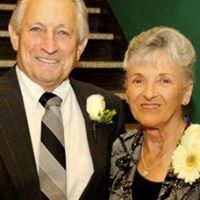Ronald S Carson
age ~70
from Renton, WA
- Also known as:
-
- Ronald M Carson
- Ronald B Carson
- Ron S Carson
- Ron M Carson
- Ronald Scarson
Ronald Carson Phones & Addresses
- Renton, WA
- Shelton, WA
- Torrance, CA
- Bellevue, WA
- Los Angeles, CA
- Manson, WA
Resumes

Technical Fellow, Systems Engineering
view sourceLocation:
Greater Seattle Area
Industry:
Aviation & Aerospace

Ronald Carson
view source
Ronald Carson
view source
Ronald Carson
view source
Ronald Carson
view source
Ronald Carson
view source
Ronald Carson
view source
Ronald Carson
view sourceMedicine Doctors

Ronald W. Carson
view sourceSpecialties:
Family Medicine
Work:
Saint Francis Family Medicine
4646 NW Fielding Rd, Topeka, KS 66618
7852864475 (phone), 7852864423 (fax)
4646 NW Fielding Rd, Topeka, KS 66618
7852864475 (phone), 7852864423 (fax)
Education:
Medical School
Kansas City University of Medicine and Biosciences College of Osteopathic Medicine
Graduated: 1995
Kansas City University of Medicine and Biosciences College of Osteopathic Medicine
Graduated: 1995
Procedures:
Arthrocentesis
Destruction of Benign/Premalignant Skin Lesions
Electrocardiogram (EKG or ECG)
Osteopathic Manipulative Treatment
Skin Tags Removal
Vaccine Administration
Destruction of Benign/Premalignant Skin Lesions
Electrocardiogram (EKG or ECG)
Osteopathic Manipulative Treatment
Skin Tags Removal
Vaccine Administration
Conditions:
Abdominal Hernia
Abnormal Vaginal Bleeding
Acute Pharyngitis
Acute Upper Respiratory Tract Infections
Alopecia Areata
Abnormal Vaginal Bleeding
Acute Pharyngitis
Acute Upper Respiratory Tract Infections
Alopecia Areata
Languages:
English
Spanish
Spanish
Description:
Dr. Carson graduated from the Kansas City University of Medicine and Biosciences College of Osteopathic Medicine in 1995. He works in Topeka, KS and specializes in Family Medicine. Dr. Carson is affiliated with St Francis Health.
Isbn (Books And Publications)


Behavioral Genetics: The Clash of Culture and Biology
view sourceAuthor
Ronald A. Carson
ISBN #
0801860695

Behavioral Genetics: The Clash of Culture and Biology
view sourceAuthor
Ronald A. Carson
ISBN #
0801872308



Philosophy of Medicine and Bioethics: A Twenty-Year Retrospective and Critical Appraisal
view sourceAuthor
Ronald A. Carson
ISBN #
0792335457
Name / Title
Company / Classification
Phones & Addresses
CARSON CUSTOM INTERIORS LLC
Director
VOX2DATA, INC
Medical Software Development
Medical Software Development
9301 Wilshire Blvd STE 203, Beverly Hills, CA 90210
9413591276
9413591276
Us Patents
-
Method For Maintaining Instantaneous Bandwidth For A Segmented, Mechanically Augmented Phased Array Antenna
view source -
US Patent:6356239, Mar 12, 2002
-
Filed:Aug 23, 2000
-
Appl. No.:09/644328
-
Inventors:Ronald Steven Carson - Renton WA
-
Assignee:The Boeing Company - Chicago IL
-
International Classification:H01Q 310
-
US Classification:343765, 343757, 343766, 342375
-
Abstract:A system and method for positioning an electronically scanned, phased array antenna disposed on a moving platform, such as an aircraft, to enable the antenna to remain pointed at, and track, a geostationary satellite as the moving platform is in motion. The antenna is mounted on a support which is coupled to an output shaft of a motor. The motor is used to rotate the support, and therefore the antenna, as needed to maintain the beam of the antenna directed at the satellite. The support is rotated only after a scan angle of the beam of the antenna exceeds a predetermined maximum scan angle. The degree of rotational movement of the support is further selected to be such that only a minimum number of adjustments to the position of the support are needed to maintain the scan angle of the beam of the antenna within the desired maximum scan angle over a large distance of travel of the aircraft. The invention significantly reduces the frequency of adjustment of the position of the support required to maintain the antenna directed at the desired satellite, and thus significantly reduces wear and tear on the motor without adversely affecting the antennas ability to track a target satellite.
-
Method For Accurately Tracking And Communicating With A Satellite From A Mobile Platform
view source -
US Patent:6483458, Nov 19, 2002
-
Filed:May 30, 2001
-
Appl. No.:09/870365
-
Inventors:Ronald Steven Carson - Renton WA
-
Assignee:The Boeing Company - Chicago IL
-
International Classification:H04B 700
-
US Classification:342367, 342 74, 342 81, 342368, 342377
-
Abstract:A method for accurately tracking and communicating with a satellite from a mobile platform, wherein the satellite has an antenna which performs both transmit and receive functions from a single antenna aperture. The method involves using an inertial reference unit (IRU) of the mobile platform to initially acquire the signal from the satellite. A sequential lobing process is then used to more accurately center the antenna aperture relative to the receive beam from the satellite. The antenna is then used to transmit data or other information, and the antenna pointing is maintained by an additional IRU local to the antenna with higher accuracy and lower latency than the IRU of the mobile platform. Periodically, transmissions from the antenna are inhibited and the sequential lobing process is repeated to eliminate for any inertial reference drift error. The method allows for more accurate antenna pointing when a single antenna aperture is used for both transmit and receive functions without significantly interfering with the transmission of data or information from the antenna.
-
Aircraft Phased Array Antenna Structure Including Adjacently Supported Equipment
view source -
US Patent:6844855, Jan 18, 2005
-
Filed:Jan 25, 2002
-
Appl. No.:10/057286
-
Inventors:Ronald Steven Carson - Renton WA, US
-
Assignee:The Boeing Company - Chicago IL
-
International Classification:H01Q 128
-
US Classification:343705, 343708
-
Abstract:An aircraft phased array antenna system has transmit and receive antenna structures externally mounted on the aircraft fuselage. Each antenna comprises a plurality of phased array elements and antenna power and support equipment. Aerodynamically shaping antenna structure to enclose an antenna element grid provides additional antenna structure volume, which is efficiently utilized by locating antenna support equipment within the antenna structure. To control signal attenuation a receive antenna internal converter converts receive frequency signals to L-band frequency signals for aircraft use, and a similar transmit antenna converter converts L-band frequency signals to transmit frequency signals, thus unconstraining antenna to internal aircraft equipment spacing. To reduce power loss and cabling weight, antenna operating power is first generated in the 28 to 270 volts DC range within the aircraft, and locally converted in each antenna to the 3 to 6 volt DC power to operate each antenna's phased array elements.
-
Aircraft Phased Array Antenna Structure Including Adjacently Supported Equipment
view source -
US Patent:7274336, Sep 25, 2007
-
Filed:Aug 18, 2003
-
Appl. No.:10/642888
-
Inventors:Ronald S Carson - Renton WA, US
-
Assignee:The Boeing Company - Chicago IL
-
International Classification:H01Q 1/28
-
US Classification:343705, 343708
-
Abstract:An aircraft phased array antenna system has transmit and receive antenna structures externally mounted on the aircraft fuselage. Each antenna comprises a plurality of phased array elements and antenna power and support equipment. Aerodynamically shaping antenna structure to enclose an antenna element grid provides additional antenna structure volume, which is efficiently utilized by locating antenna support equipment within the antenna structure. To control signal attenuation a receive antenna internal converter converts receive frequency signals to L-band frequency signals for aircraft use, and a similar transmit antenna converter converts L-band frequency signals to transmit frequency signals, thus unconstraining antenna to internal aircraft equipment spacing. To reduce power loss and cabling weight, antenna operating power is first generated in the 28 to 270 volts DC range within the aircraft, and locally converted in each antenna to the 3 to 6 volt DC power to operate each antenna's phased array elements.
-
Method And Apparatus For Providing Bi-Directional Data Services And Live Television Programming To Mobile Platforms
view source -
US Patent:8646010, Feb 4, 2014
-
Filed:Jul 5, 2011
-
Appl. No.:13/176570
-
Inventors:Greg A. Bengeult - Auburn WA, US
Jeffrey P. Harrang - Sammamish WA, US
William R. Richards - Issaquah WA, US
Michael G. Lynch - Seattle WA, US
Michael De La Chapelle - Bellevue WA, US
Paulus J. Martens - Seattle WA, US
Ronald S. Carson - Renton WA, US
Daniel F. Miller - Sumner WA, US
Geoffrey O. White - Kent WA, US
George Fitzsimmons - Kent WA, US
Russell Berkheimer - Issaquah WA, US
Robert P. Higgins - Seattle WA, US
Arthur F. Morrison - Kent WA, US -
Assignee:The Boeing Company - Chicago IL
-
International Classification:H04N 7/18
-
US Classification:725 76, 725 75, 455 121
-
Abstract:A system for bi-directional data content transfer between a plurality of mobile platforms, such as aircraft or cruise ships, and a ground-based control segment. The system includes the ground-based control segment, a space segment and a mobile system disposed on each mobile platform. The ground-based control segment includes an antenna which is used to transmit encoded RF signals representative of data content to the space segment. The space segment includes a plurality of satellite transponders, with one of the transponders being designated by the ground-based control segment to transpond the encoded RF signals to the mobile system. The mobile system includes steerable receive and transmit antennas. The receive antenna receives the encoded RF signals from the satellite transponder, which are thereafter decoded, demodulated, D/A converted by a communications subsystem and transmitted to a server. The server filters off that data content not requested by any occupants on the mobile system.
-
Method And Apparatus For Bi-Directional Data Services And Live Television Programming To Mobile Platforms
view source -
US Patent:20090080368, Mar 26, 2009
-
Filed:Nov 17, 2008
-
Appl. No.:12/272299
-
Inventors:Greg A. Bengeult - Auburn WA, US
Jeffrey P. Harrang - Sammamish WA, US
William R. Richards - Issaquah WA, US
Michael G. Lynch - Seattle WA, US
Michael de La Chapelle - Bellevue WA, US
Paulus J. Martens - Seattle WA, US
Ronald S. Carson - Renton WA, US
Daniel F. Miller - Sumner WA, US
Geoffrey O. White - Kent WA, US
George Fitzsimmons - Reno NV, US
Russell Berkheimer - Issaquah WA, US
Robert P. Higgins - Seattle WA, US
Arthur F. Morrison - Kent WA, US -
Assignee:The Boeing Company - Chicago IL
-
International Classification:H04B 7/185
-
US Classification:370316
-
Abstract:A system for bi-directional data content transfer between a plurality of mobile platforms, such as aircraft or cruise ships, and a ground-based control segment. The system includes the ground-based control segment, a space segment and a mobile system disposed on each mobile platform. The ground-based control segment includes an antenna which is used to transmit encoded RF signals representative of data content to the space segment. The space segment includes a plurality of satellite transponders, with one of the transponders being designated by the ground-based control segment to transpond the encoded RF signals to the mobile system. The mobile system includes steerable receive and transmit antennas. The receive antenna receives the encoded RF signals from the satellite transponder, which are thereafter decoded, demodulated, D/A converted by a communications subsystem and transmitted to a server. The server filters off that data content not requested by any occupants on the mobile system. A local area network (LAN) receives the remaining data content and provides same to individual users on the mobile platform in accordance with previously submitted programming requests or data input by the users at access stations associated independently with each user. The transmit antenna is used to transmit data content from laptop computers, PDAs or other user electronic devices coupled to the access stations back to the designated satellite transponder. The satellite transponder then transponds the data back to the antenna of the ground-based control segment.
-
Method And Apparatus For Providing Bi-Directional Data Services And Live Television Programming To Mobile Platforms
view source -
US Patent:20140150033, May 29, 2014
-
Filed:Feb 3, 2014
-
Appl. No.:14/171627
-
Inventors:- CHICAGO IL, US
Jeffrey P. Harrang - Sammamish WA, US
William R. Richards - Issaquah WA, US
Michael G. Lynch - Seattle WA, US
Michael De La Chapelle - Bellevue WA, US
Paulus J. Martens - Seattle WA, US
Ronald S. Carson - Renton WA, US
Daniel F. Miller - Sumner WA, US
Geoffrey O. White - Kent WA, US
George Fitzsimmons - Kent WA, US
Russell Berkheimer - Issaquah WA, US
Robert P. Higgins - Seattle WA, US
Arthur F. Morrison - Kent WA, US -
Assignee:THE BOEING COMPANY - CHICAGO IL
-
International Classification:H04N 7/173
-
US Classification:725 64
-
Abstract:A system for bi-directional data content transfer between a plurality of mobile platforms, such as aircraft or cruise ships, and a ground-based control segment. The system includes the ground-based control segment, a space segment and a mobile system disposed on each mobile platform. The ground-based control segment includes an antenna which is used to transmit encoded RF signals representative of data content to the space segment. The space segment includes a plurality of satellite transponders, with one of the transponders being designated by the ground-based control segment to transpond the encoded RF signals to the mobile system. The mobile system includes steerable receive and transmit antennas. The receive antenna receives the encoded RF signals from the satellite transponder, which are thereafter decoded, demodulated, D/A converted by a communications subsystem and transmitted to a server. The server filters off that data content not requested by any occupants on the mobile system. A local area network (LAN) receives the remaining data content and provides same to individual users on the mobile platform in accordance with previously submitted programming requests or data input by the users at access stations associated independently with each user. The transmit antenna is used to transmit data content from laptop computers, PDAs or other user electronic devices coupled to the access stations back to the designated satellite transponder. The satellite transponder then transponds the data back to the antenna of the ground-based control segment.
Plaxo

Ronald E. Carson
view sourceWaynesboro PA
Classmates

Ronald Carson
view sourceSchools:
Loyd Star High School Brookhaven MS 1986-1990
Community:
Ronald Jones, Kathleen Case

Ronald Carson
view sourceSchools:
Carver High School Newport News VA 1963-1967
Community:
Joyce Howerton, Willie Smith, James Johnson

Ronald Carson
view sourceSchools:
Muskegon Heights High School Muskegon Heights MI 1995-1999
Community:
Forest Jourden, Jeffrey Elliott, Dora Bradford, Talitha Johnson

Ronald Carson
view sourceSchools:
Colchester High School Colchester IL 1965-1969
Community:
Jeri Brown, Kelly Cookson

Ronald Carson
view sourceSchools:
Thomas A. Edison High School Elmira Heights NY 1971-1975
Community:
Kimberly Cady, Linda Stradley

Ronald Carson
view sourceSchools:
Forest Hill Parkway Elementary School Cleveland OH 1974-1978, Empire Junior High School Cleveland OH 1980-1980, St. Philip Neri School Cleveland OH 1981-1981, Benedictine High School Cleveland OH 1982-1985
Community:
William Varga, Thomas Presits, Richard Zidjunas

Ronald Carson
view sourceSchools:
Yadkin High School Boonville NC 1955-1965, Yadkinville High School Yadkinville NC 1965-1967
Community:
Jim Reece, James Phillips, Juan Jimmy, William Long, Lester Kimber, James Dobson, Bobby Gwyn, Donald Staton, Mary Kyle, Mary Russell

Snelson Golden Middle Sch...
view sourceGraduates:
Ronald Carson (1996-2000),
Nathan Wilson (1994-1995),
Kenyetta Williams (1996-2000),
Kayla Washington (1997-2000)
Nathan Wilson (1994-1995),
Kenyetta Williams (1996-2000),
Kayla Washington (1997-2000)
Youtube
Myspace
Googleplus

Ronald Carson
Work:
Snoqualmie Casino - Table Games Employee (2009)

Ronald Carson

Ronald Carson

Ronald Carson

Ronald Carson
Work:
City of Lewisville - Operation Supervisor
Education:
Carrollton High

Ronald Carson

Ronald Carson

Ronald D Carson
view source
Ronald Carson
view source
Ronald Carson
view source
Ronald Mark Carson
view source
Ronald Marvin Carson
view source
Ronald Carson
view source
Ronald Carson
view source
Ronald Eugene Carson
view sourceFlickr
Get Report for Ronald S Carson from Renton, WA, age ~70















